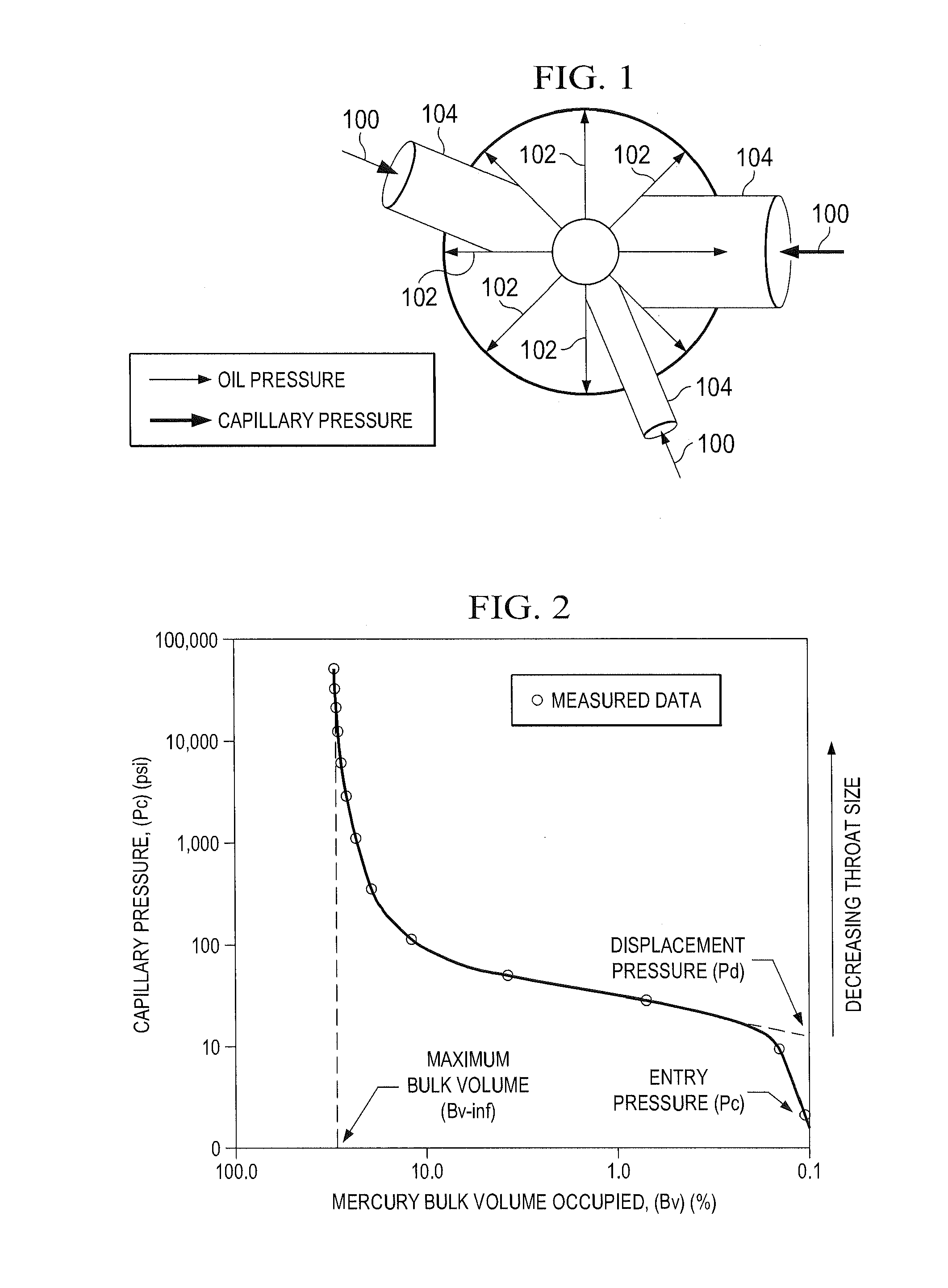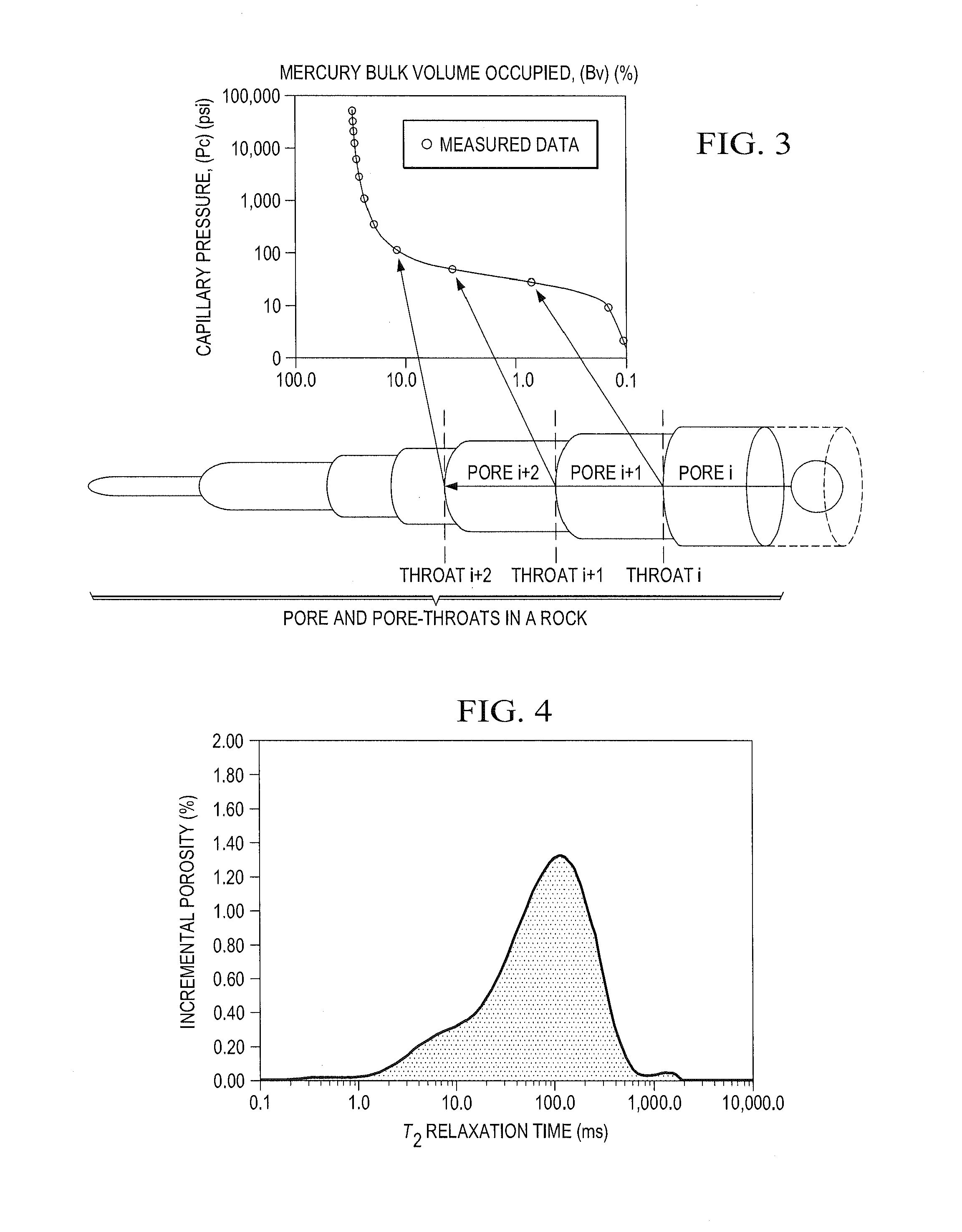Determining continuous capillary pressure curves for subsurface earth formations using saturation and nmr log data
a continuous capillary pressure and subsurface earth technology, applied in seismology for waterlogging, using reradiation, instruments, etc., can solve the problems of gross errors, inconvenient use, and inability to accurately determine the continuous capillary pressure using current traditional methods,
- Summary
- Abstract
- Description
- Claims
- Application Information
AI Technical Summary
Benefits of technology
Problems solved by technology
Method used
Image
Examples
case 1
[0073]FIG. 13 shows a bi-modal NMR response with an excellent quality (Case 1). The wireline porosity and water saturation at this depth are 24.92% and 11.74%, respectively. The two pore system does not seem to be coupled, as evident by the lack of signal at around 100 μsec in FIG. 13. The optimized Thomeer parameters obtained from the bi-modal NMR response data of FIG. 13 by the workflow are shown in Table 2.
TABLE 2Pore System 1Pore System 2Pore System 3Bv10Bv20.2000Bv30.0866G1—G20.1852G30.2900Log Pd1—Log Pd22.0402Log Pd33.4915
[0074]Note that the first pore does not exist in the results. This is because the obtained entry pressure for the calibrated NMR-derived capillary pressure is higher than 46.3 psi Hg / Air, the set threshold for Thomeer parameters of Table 1.
[0075]FIG. 14 and FIG. 15 show the corresponding capillary pressure curves from the NMR derivation and Thomeer fitting on a log-log scale and semi-log scale, respectively. Note that the two pore systems are also represented...
case 2
[0077]FIG. 16 shows a case with at least three pore systems. The sample was taken from a rock sample obtained at a measured depth of 6991.25 feet. Note that the NMR is clipped at largest pore system. The wireline porosity and water saturation were determined to be 24.65% and 13.56%, respectively. Table 3 shows the optimized Thomeer parameters for this case.
TABLE 3Pore System 1Pore System 2Pore System 3Bv10.1571Bv20.0663Bv30.0505G10.1704G21.2000G30.2209Log Pd11.5487Log Pd22.4758Log Pd32.9020
[0078]Note that the optimization is designed for a maximum of three pore systems. FIGS. 17 and 18 show the NMR-derived capillary pressure and its Thomeer fit plotted on a log-log and semi-log scales, respectively. The total bulk volume and the water saturation for the reference point from the Thomeer fit is 27.39% and 13.13%, respectively.
NMR. Data Quality
[0079]As with any wireline data, NMR data can be inaccurate if the wellbore is not in a good condition. An so, the use of conventional means to ...
PUM
 Login to View More
Login to View More Abstract
Description
Claims
Application Information
 Login to View More
Login to View More - R&D
- Intellectual Property
- Life Sciences
- Materials
- Tech Scout
- Unparalleled Data Quality
- Higher Quality Content
- 60% Fewer Hallucinations
Browse by: Latest US Patents, China's latest patents, Technical Efficacy Thesaurus, Application Domain, Technology Topic, Popular Technical Reports.
© 2025 PatSnap. All rights reserved.Legal|Privacy policy|Modern Slavery Act Transparency Statement|Sitemap|About US| Contact US: help@patsnap.com



